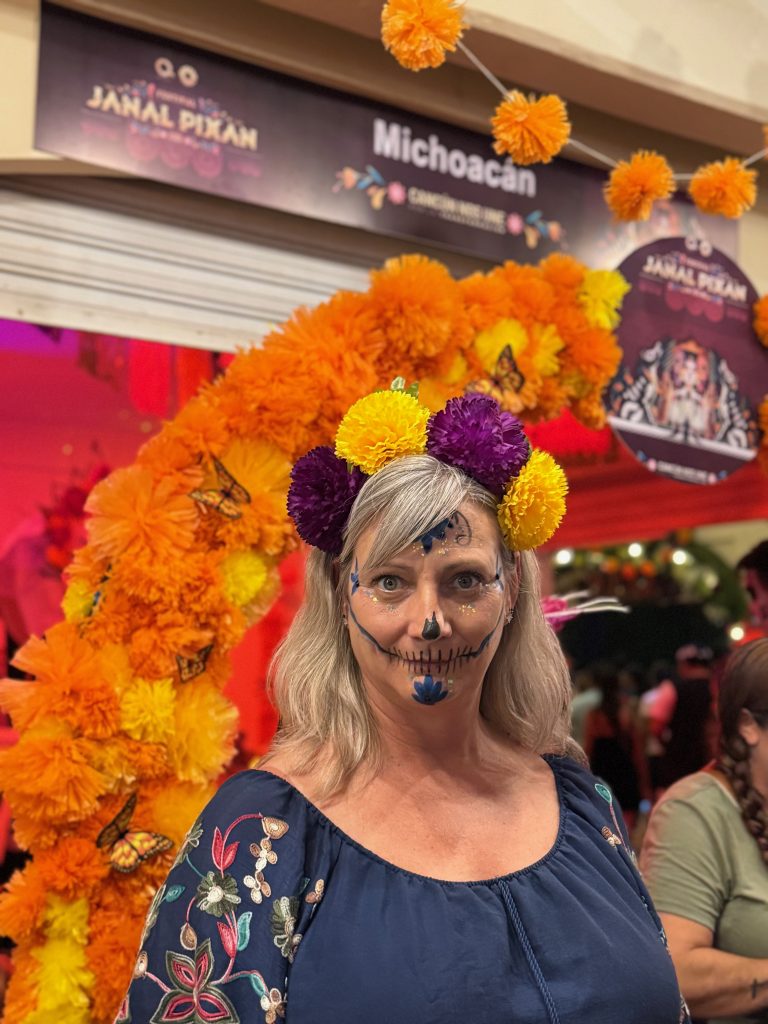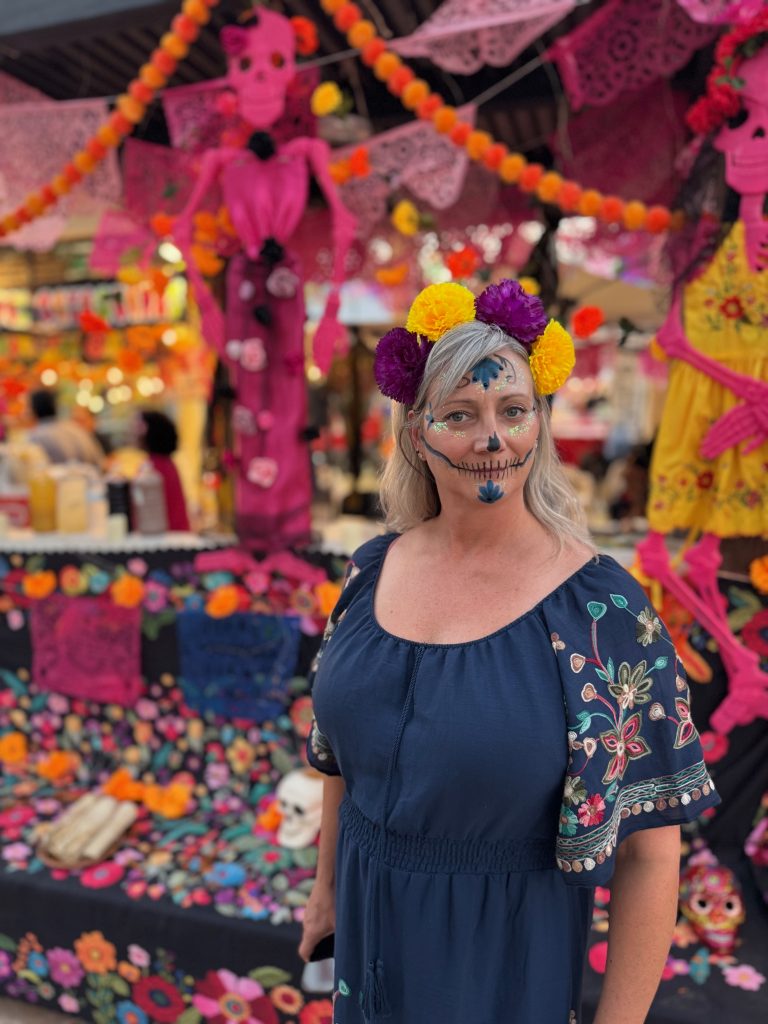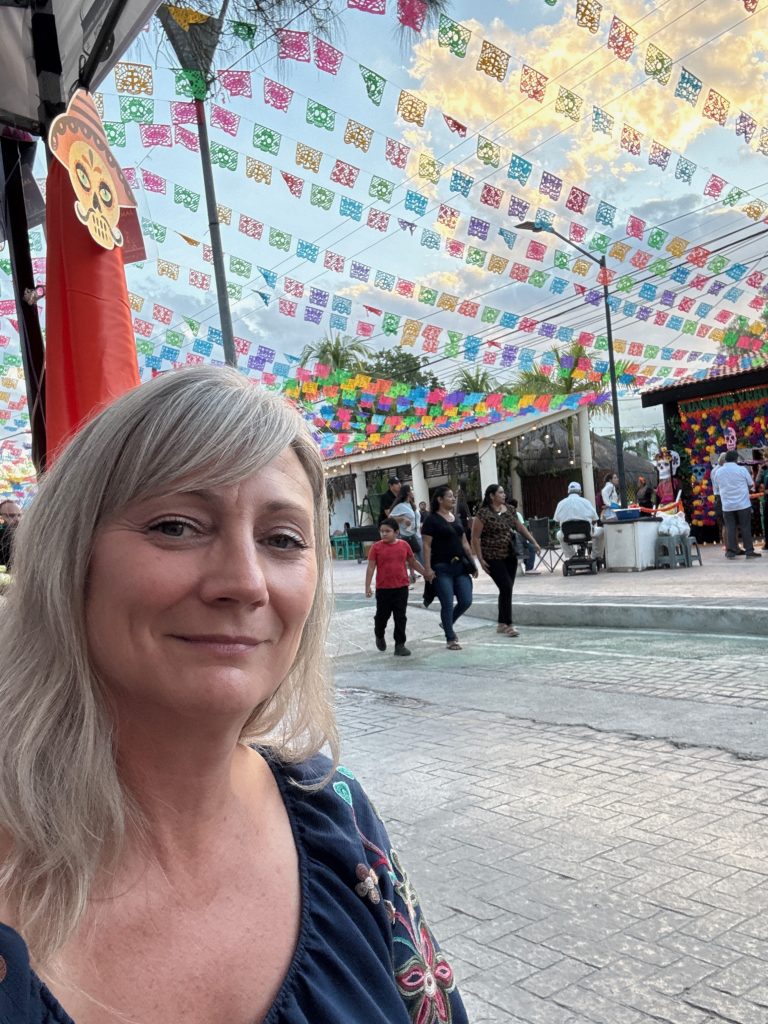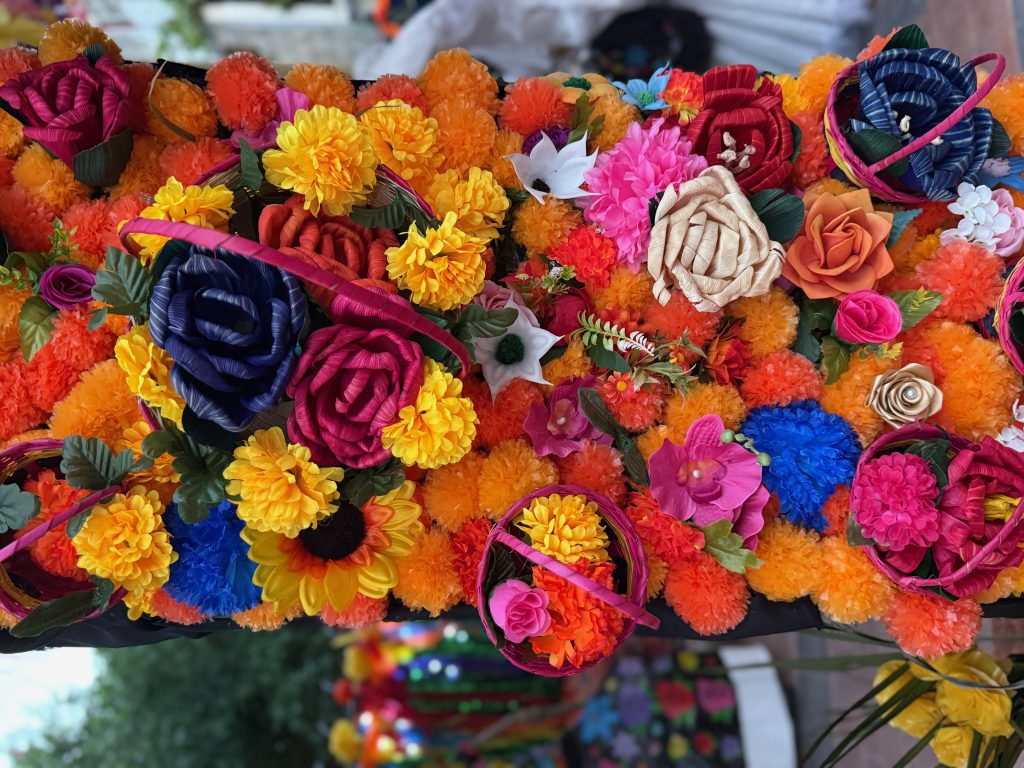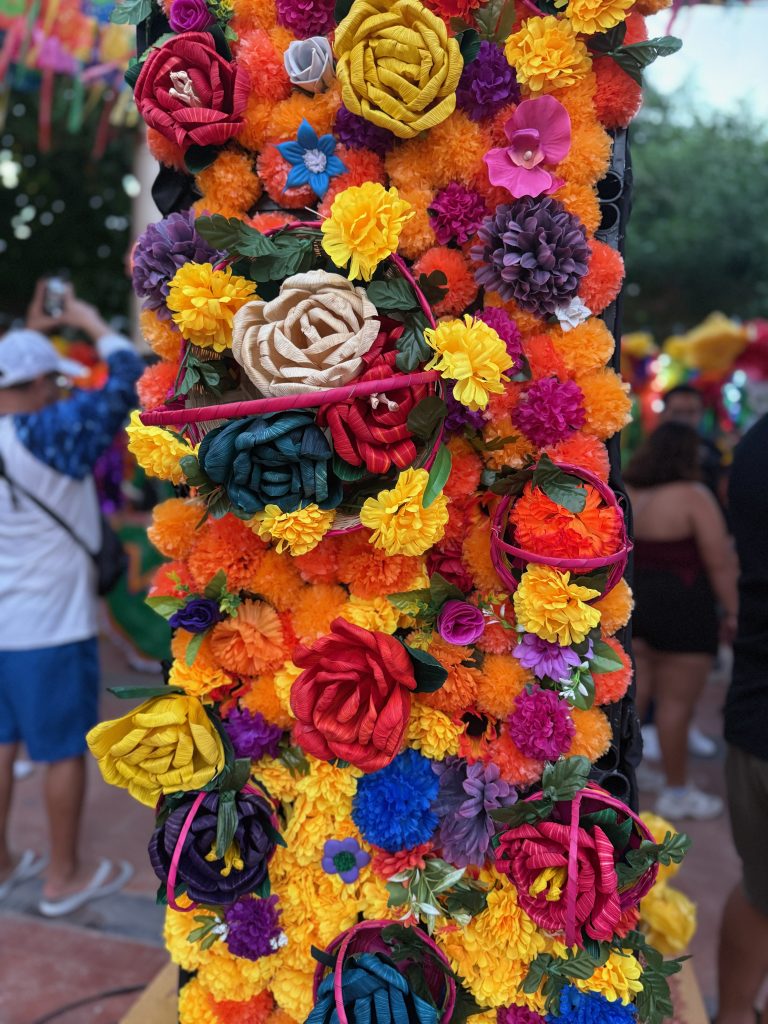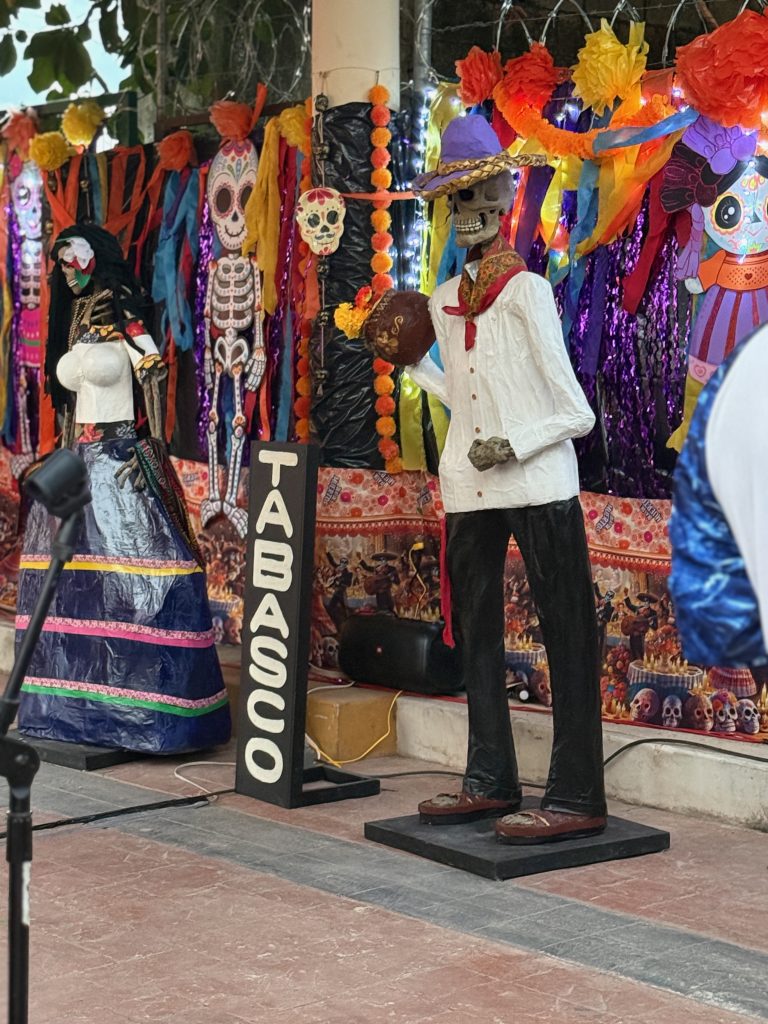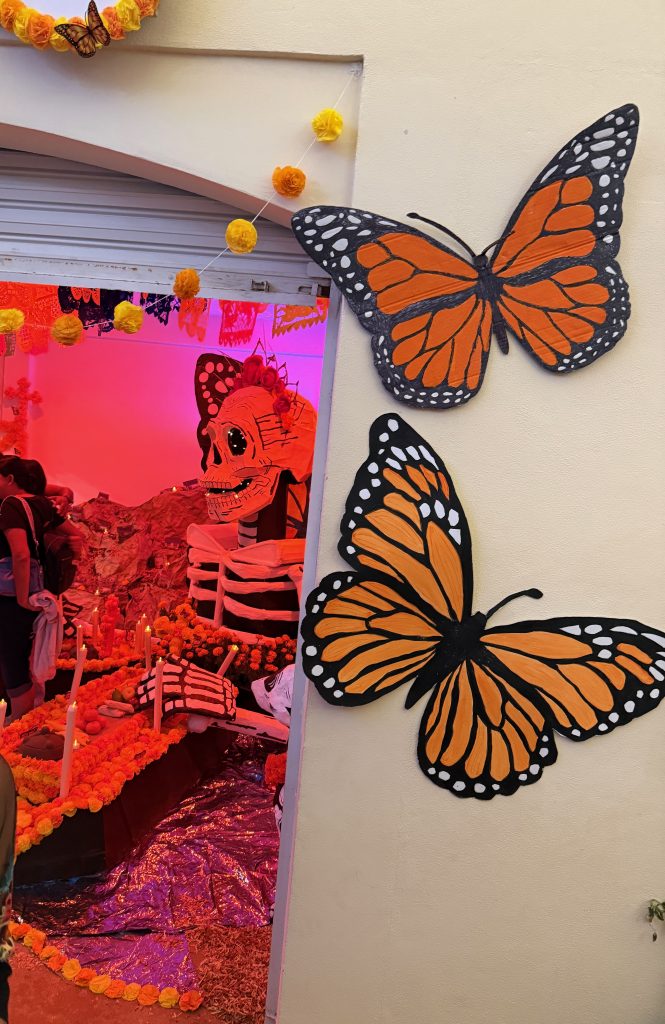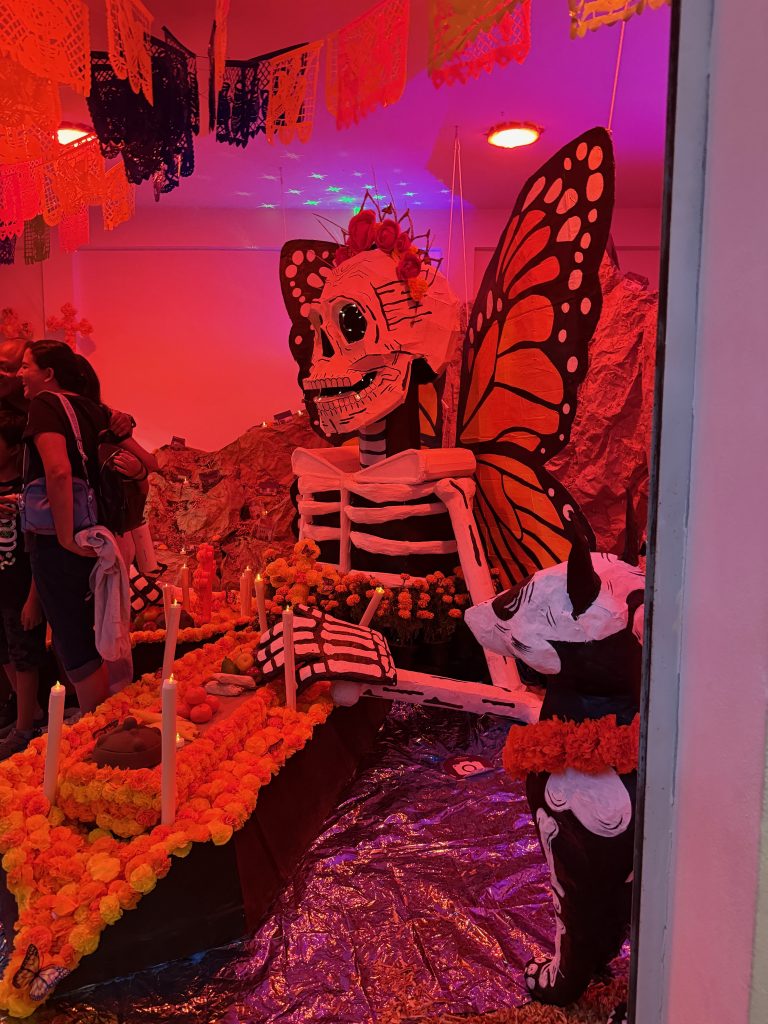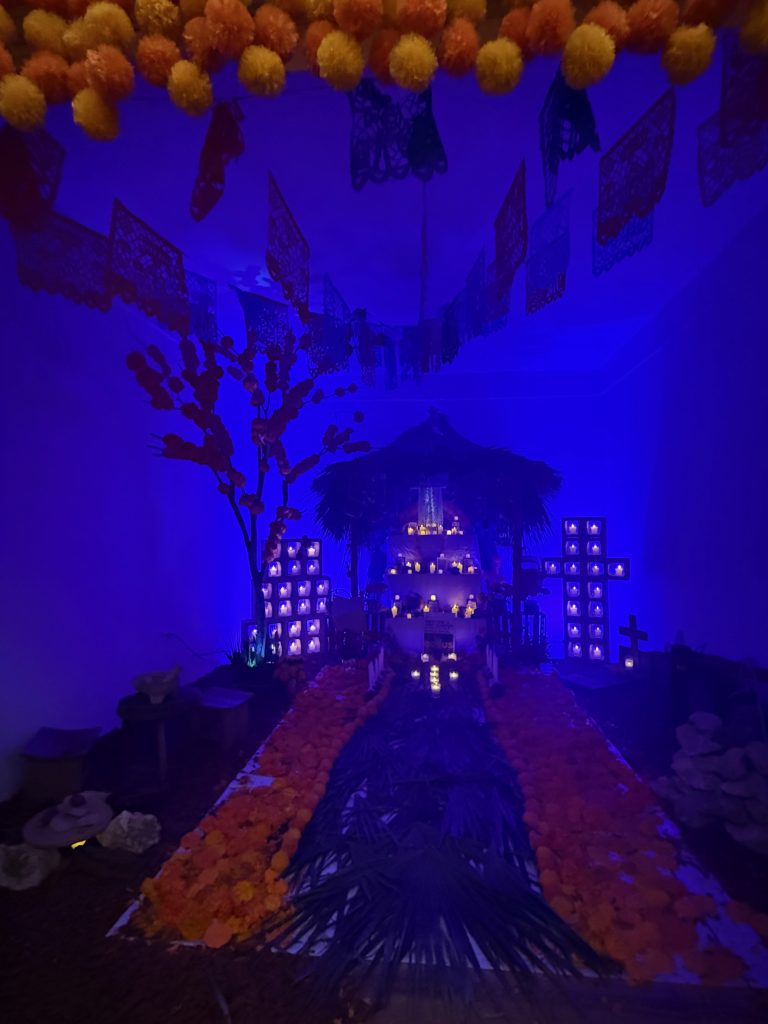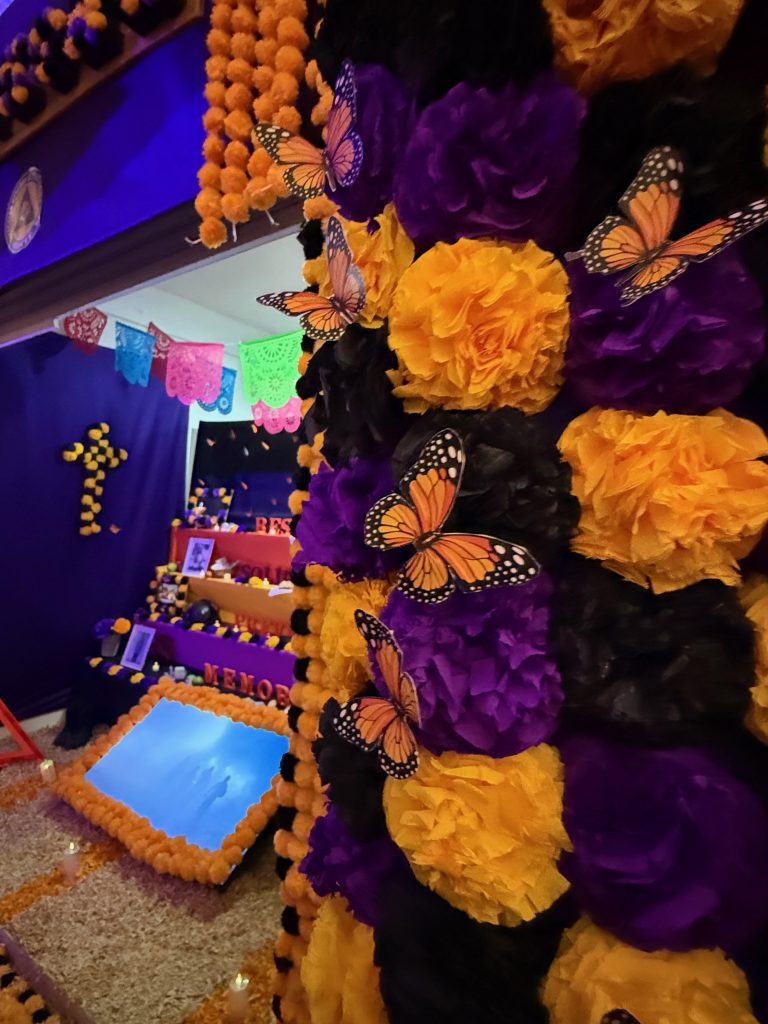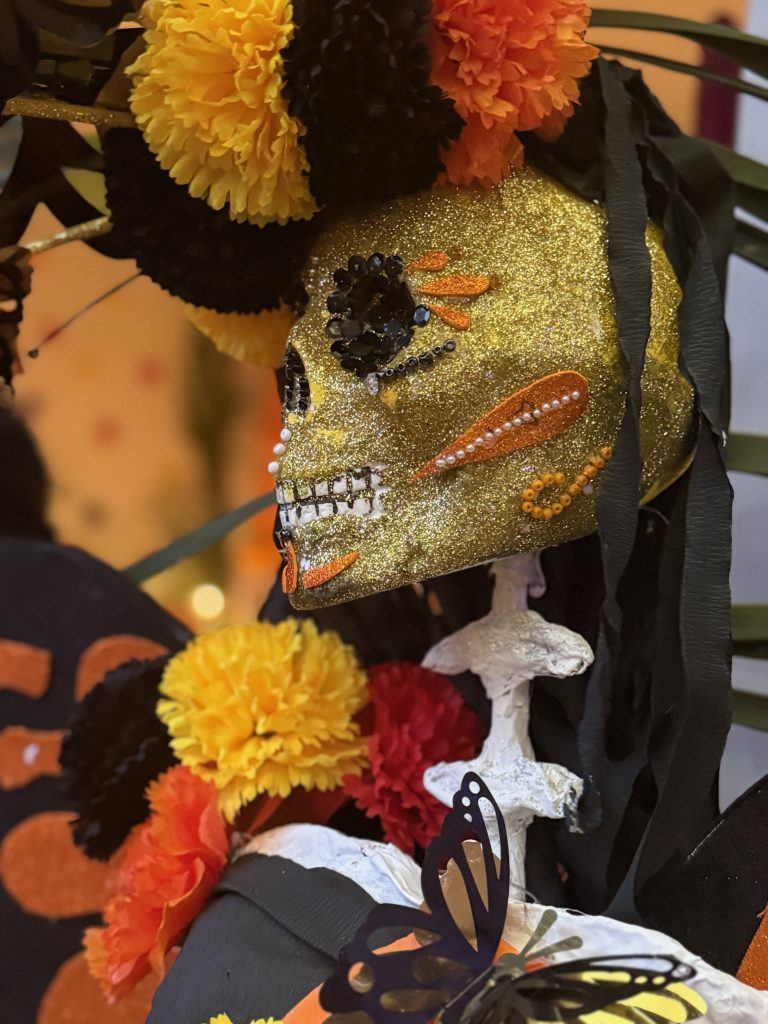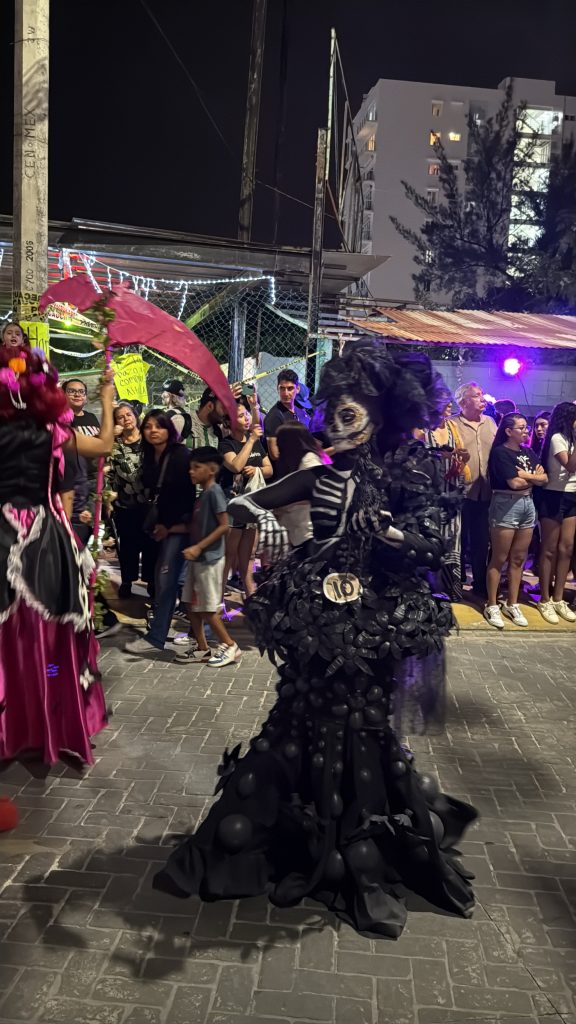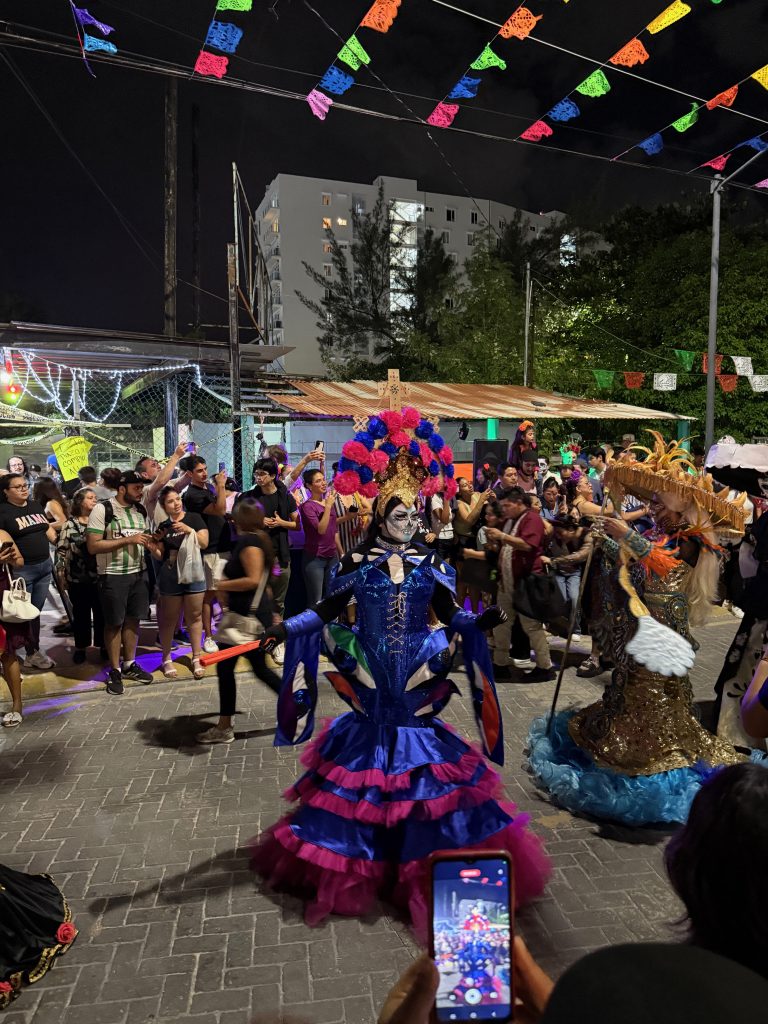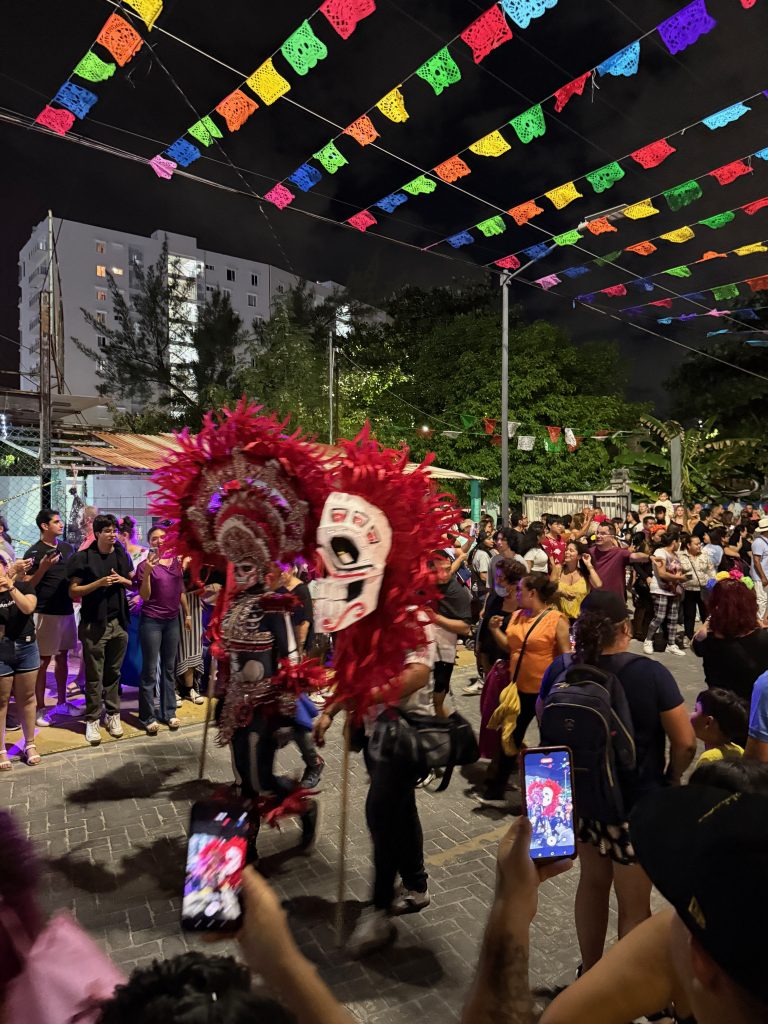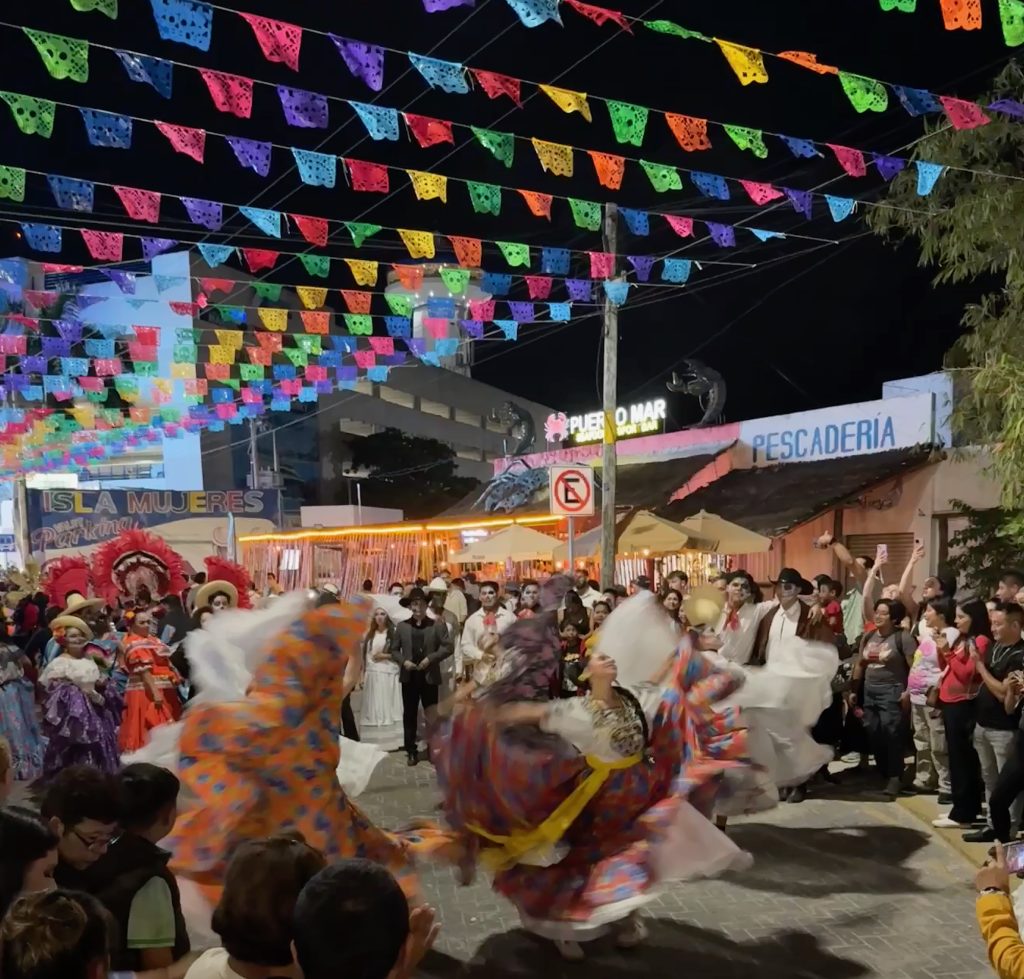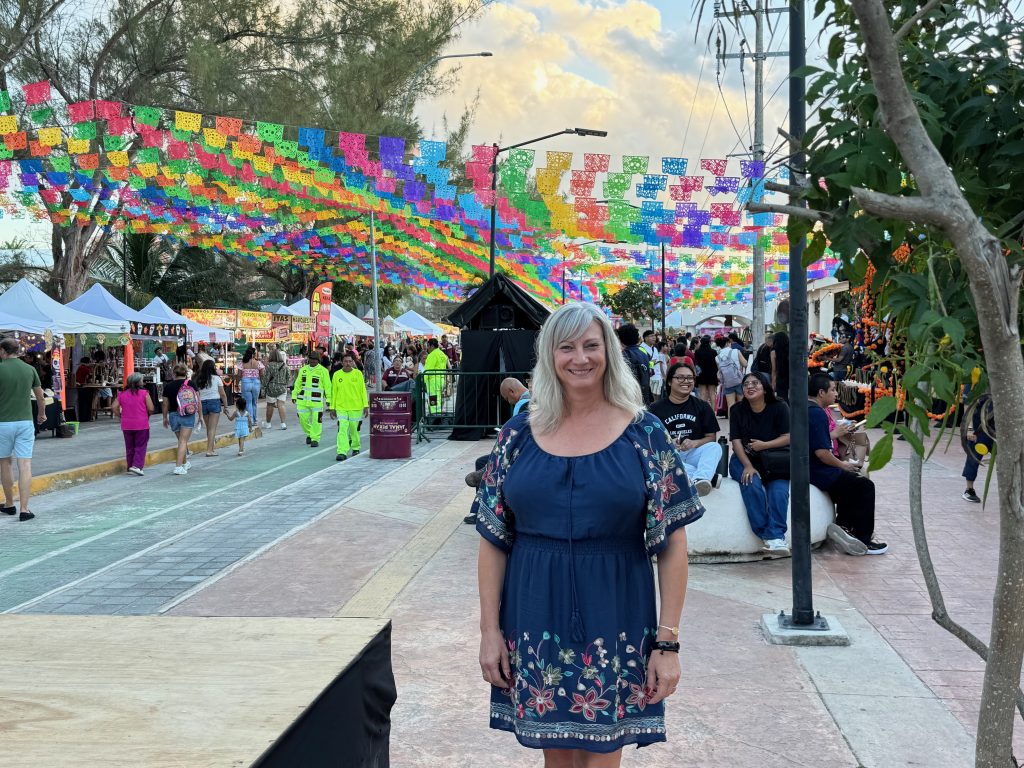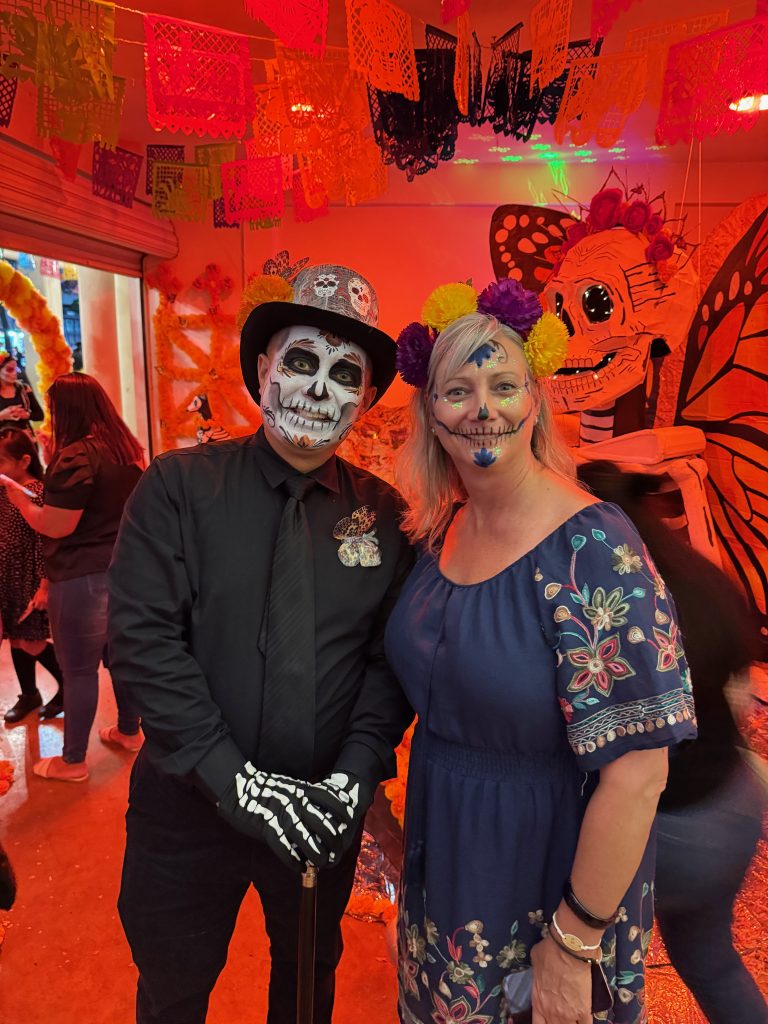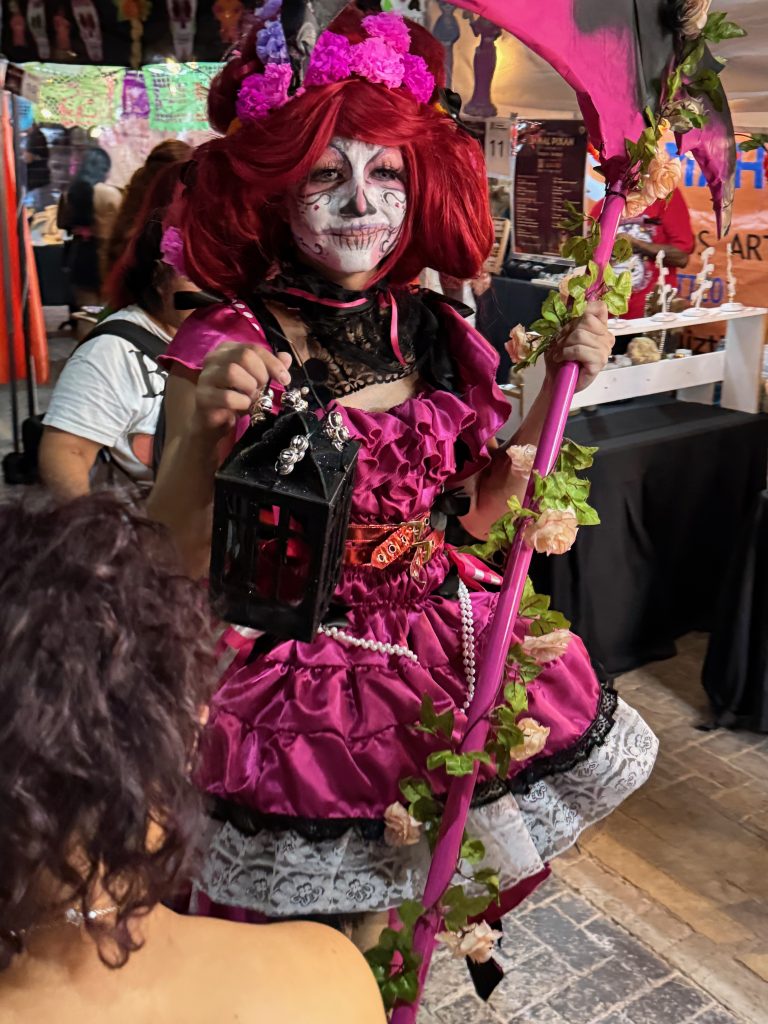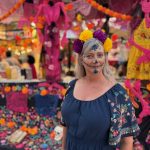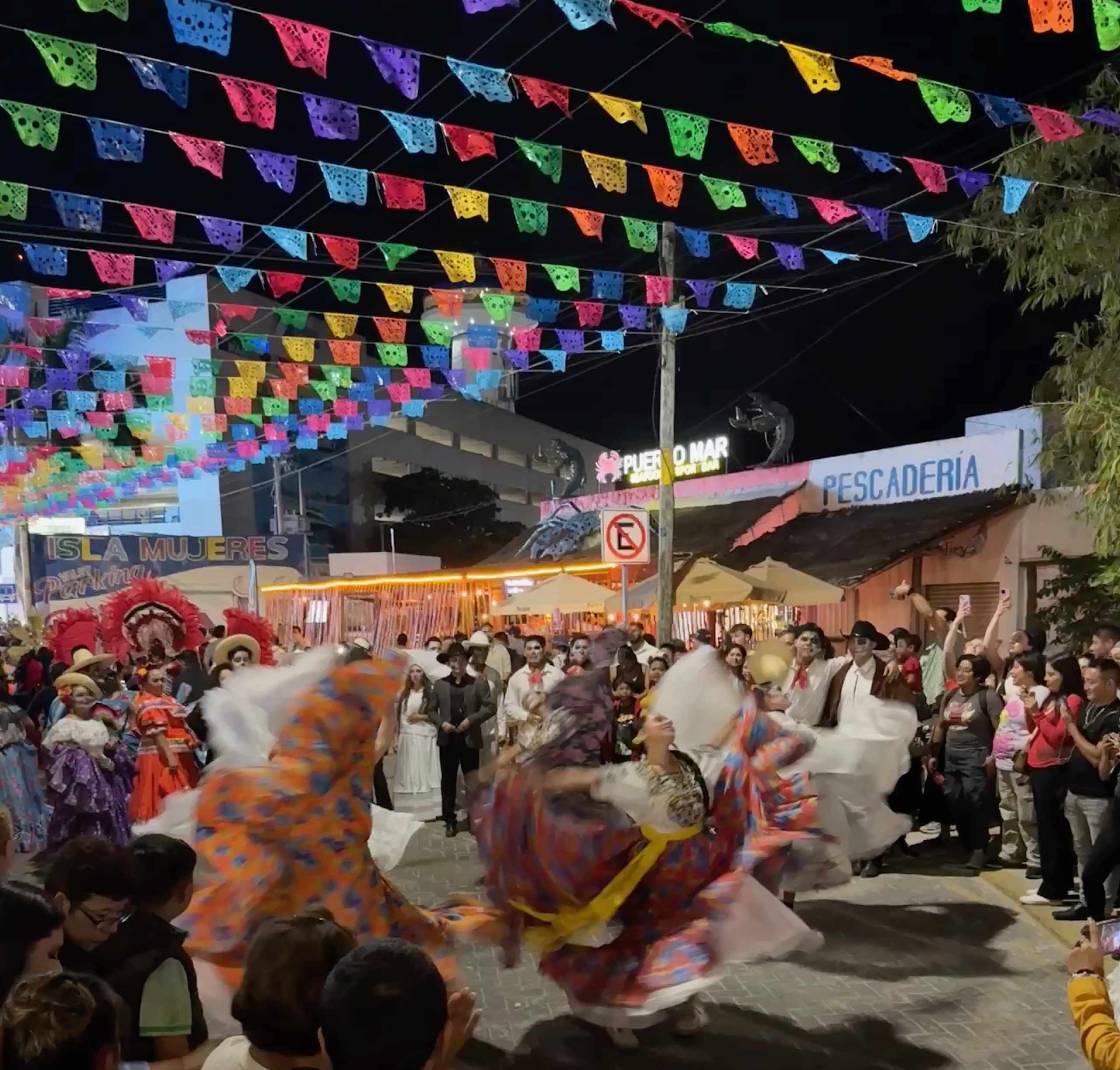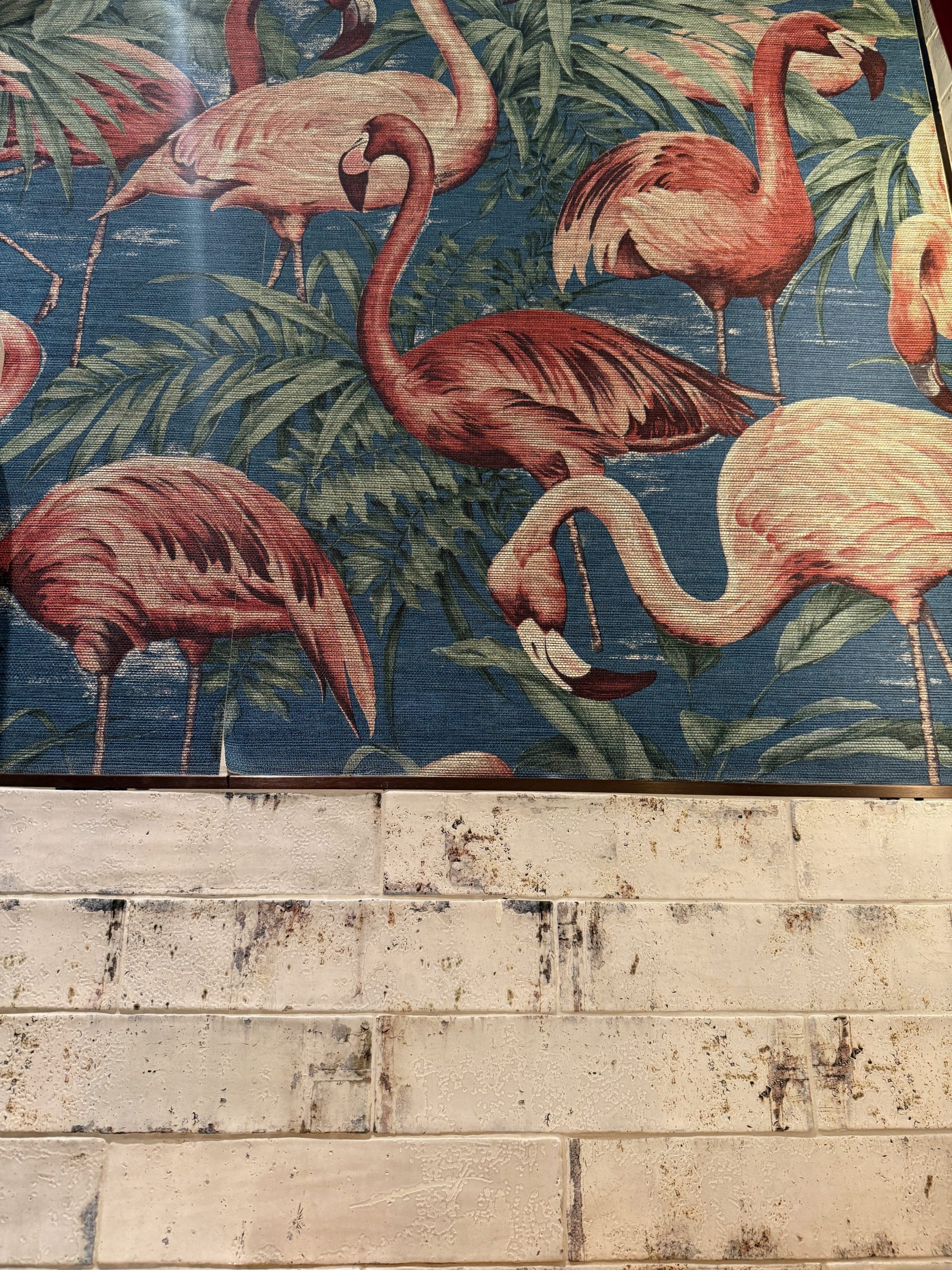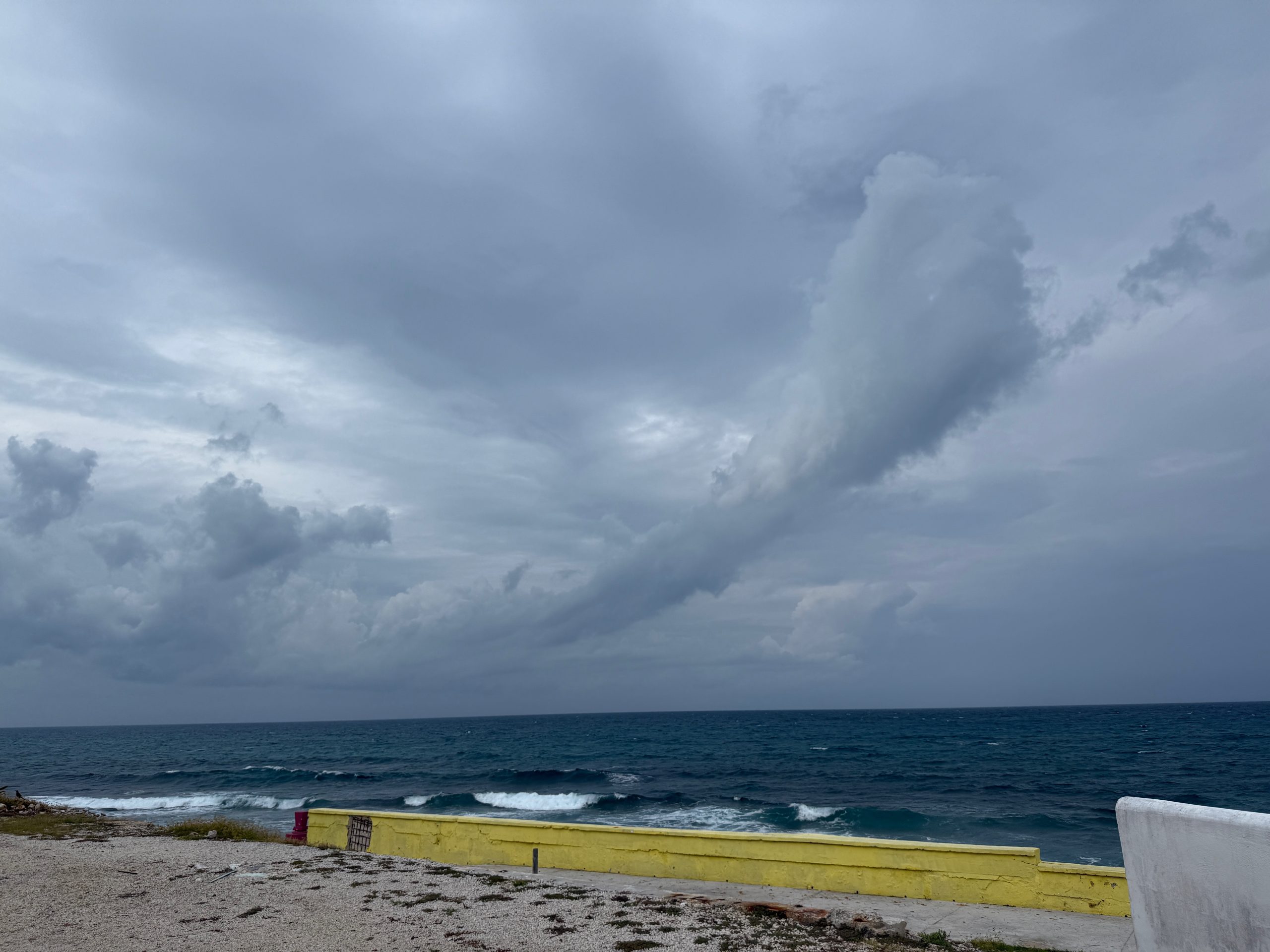Día de los Muertos (Day of the Dead) is a vibrant and deeply meaningful Mexican holiday that celebrates and honors the lives of deceased loved ones. It takes place each year on November 1 and 2, coinciding with the Catholic observances of All Saints’ Day and All Souls’ Day, but it’s rooted in much older Indigenous traditions that long predate the arrival of Europeans in the Americas.
Here’s a detailed overview
Origins and Meaning
Día de los Muertos has its roots in ancient Indigenous rituals practiced by the Aztec, Maya, Purépecha, and Totonacpeoples, who believed that death was part of the natural cycle of life and that spirits could return to visit the living.
After Spanish colonization, these beliefs blended with Catholic customs, forming the holiday as it’s known today, a unique fusion of pre-Hispanic spirituality and Christian symbolism.
Dates and What They Represent
- November 1 – Día de los Angelitos (Day of the Little Angels): Honors deceased children, who are believed to return first to visit their families.
- November 2 – Día de los Muertos (Day of the Dead): Dedicated to adults who have passed away.
Some regions also begin celebrations as early as October 31, celbrating lost pets, people who died tragically (by suicide, murder, etc.).
Traditions and Symbols
1. Ofrendas (Altars)
Families build altars at home, in cemeteries, or public spaces to welcome returning souls. Ofrendas include:
- Photos of the deceased
- Candles (to light their way)
- Marigolds (cempasúchil), believed to guide spirits with their bright color and scent
- Favorite foods and drinks of the departed
- Pan de muerto, a sweet bread decorated with bone shapes
- Sugar skulls (calaveras de azúcar), representing the cycle of life and death
2. Cemeteries
Families gather in cemeteries to clean and decorate graves, play music, share food, and spend time together, often overnight. It’s not a somber occasion but a joyful reunion with the spirits of loved ones.
3. Artistic Expressions
- Calacas (skeletons) and calaveras (skulls) appear in art, masks, and costumes.
- La Catrina, the elegant female skeleton in fancy clothes, has become the iconic symbol of the holiday. Originally created by artist José Guadalupe Posada as a satire of upper-class pretensions.
Music, Food, and Celebration
Día de los Muertos is filled with music, dance, storytelling, and food. Families share dishes like tamales, mole, atole, and champurrado (a chocolate drink). The mood is festive. It’s about remembering with love, not mourning with sorrow.
Global Recognition
The holiday is celebrated throughout Mexico and by Mexican and Latin American communities worldwide. In 2008, UNESCO recognized Día de los Muertos as part of the Intangible Cultural Heritage of Humanity.
